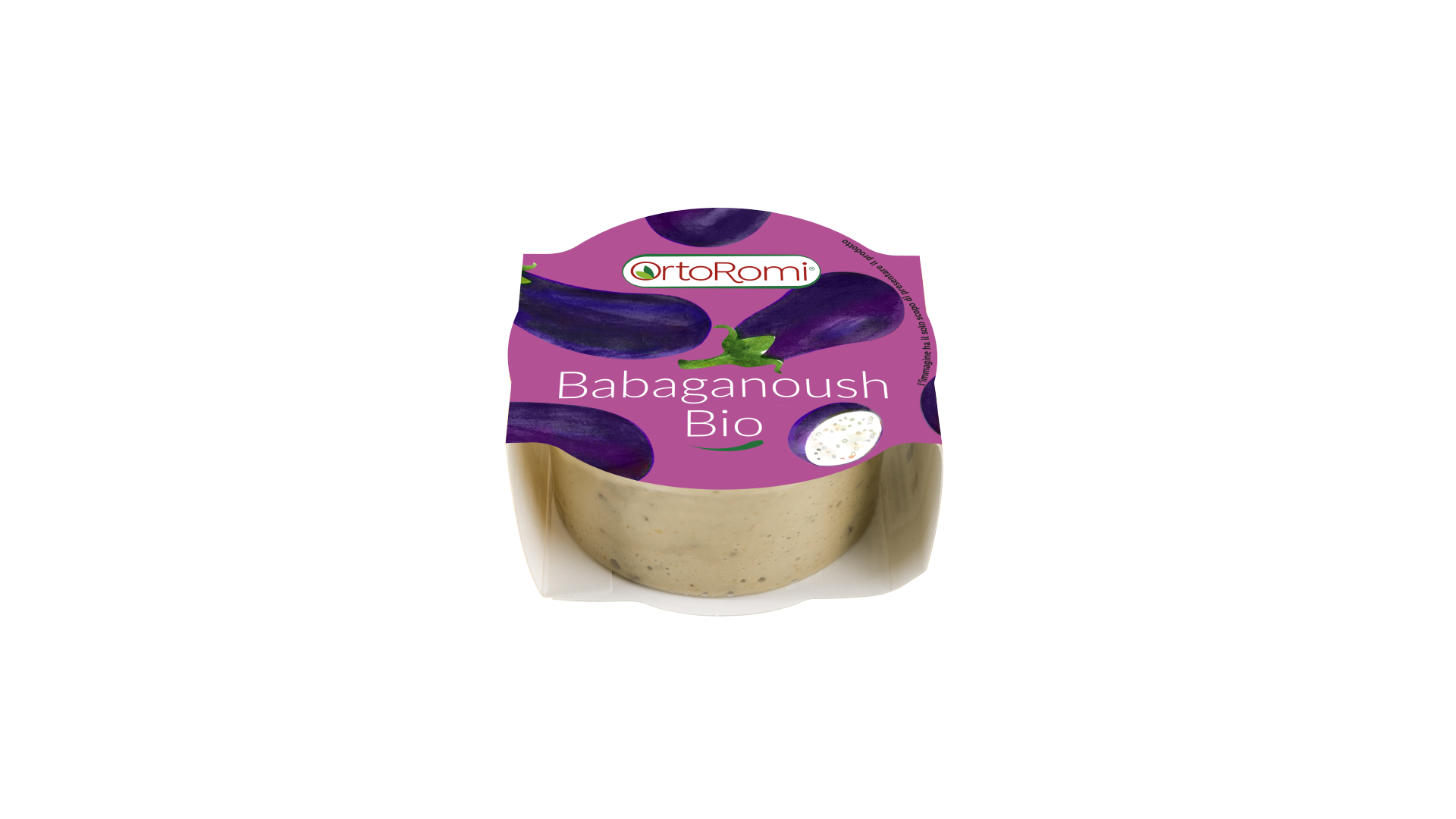
The line of ready-to-use sauces based on selected vegetables is enriched with the Babaganoush cream, typical of the Middle Eastern tradition.
Typical of Middle Eastern cuisine, babaganoush is a perfect example of how, starting from a few simple and natural ingredients, popular wisdom has been able to obtain preparations that combine genuineness and high nutritional value with an irresistible pleasantness of taste.
The main ingredient of babaganoush are aubergines which, after being grilled, are reduced to a puree and mixed with oil (sunflower oil is perfect both for its neutral taste and for the high content of "good" polyunsaturated fatty acids ), sesame seed cream (the “tahina”), garlic, lemon juice and a little salt. The result is a pleasantly thick cream, with a slightly smoky and slightly spicy flavour, which makes it suitable for being enjoyed in a thousand ways. For those who want to remain faithful to the Middle Eastern tradition, the most classic marriage is the one that sees the babaganoush accompanied by falafel, the typical fried meatballs made with chickpeas or broad beans, all accompanied with Arabic bread. But the babaganoush lends itself to countless other equally tasty proposals, in the name of experimentation: it thus proves to be a winning choice for an original appetizer, on toasted bread canapés or perhaps accompanied by the typical Sardinian carasau bread, together with a mixture of raw vegetables in season, but it can also be served as a delicious side dish to meat or fish dishes, accompanied by rice to create truly unique dishes.
Made in its most classic version, with only ingredients of organic origin, OrtoRomi's babaganoush has a profile that qualifies it as a light cream (100 g gives about 200 kcal), but rich in nutritional qualities. In fact, the intense taste of the aubergine should not be misleading: with 18 kcal per 100 g it is even less caloric than tomatoes, while providing a fair amount of mineral salts (especially potassium, but also calcium and phosphorus), and also of vitamin C. Moreover , a further element which alone would be enough to recommend frequent consumption of aubergines is their good fiber content, which we also find in babaganoush, but it is precisely the intriguing flavor of this vegetable - which combines a little bitterness with a slight spicy note - to prove its strong point. It is in fact due to some decidedly interesting extra-nutritional factors: the bitterness comes from substances similar to those present in artichoke leaves, which promote the secretion of bile helping the purification of the liver, while the peel is rich in some pharmacological principles called "anthocyanins". that science has shown to carry out various positive actions in our body. Nasunin, an anthocyanin found in eggplant, is a very powerful antioxidant, which helps protect cells from damage caused by free radicals and reduce the risk of chronic diseases such as cancer, heart disease and inflammation. Furthermore, nasunin has been shown to have anti-inflammatory properties and to be able to help reduce the risk of developing obesity and insulin resistance, without underestimating the fact that several studies indicate that it is also capable of positively stimulating the muscles of the digestive system. improving digestion.
However characteristic and precious, anthocyanins are not the only useful extra-nutritional factors that we find in aubergines, starting from that strong antioxidant which is chlorogenic acid, even with an anti-tumor action, to arrive at two recently discovered substances with curious names of scopoletin and scoparone, with a calming and relaxing action. Scopoletine, in particular, has been the subject of recent studies also for its potential protective effect on cardiovascular health and for its ability to reduce blood pressure.
An essential complement to the aubergine puree in the babaganoush, the sesame seed cream helps to raise the protein content, also providing essential amino acids such as methionine and lysine, without forgetting that the fat component of the sesame cream is made up of monounsaturated fats and polyunsaturated fats, including oleic acid, linoleic acid, and alpha-linolenic acid, which help reduce the risk of heart disease and improve overall heart health.
Still the sesame seed cream is a good source of valuable minerals such as calcium, iron, magnesium, phosphorus and potassium, and it is also a source of B vitamins, including thiamine, niacin and the 'folic acid, which help the body convert food into energy and keep the nervous system healthy.
To close the list of ingredients of OrtoRomi's babaganoush we find lemon juice and garlic. the first, beyond its pleasant acidic note, increases the vitamin C content with the result of making the iron present in the sesame cream even better assimilable and, to a lesser extent,
 Prev
Prev




